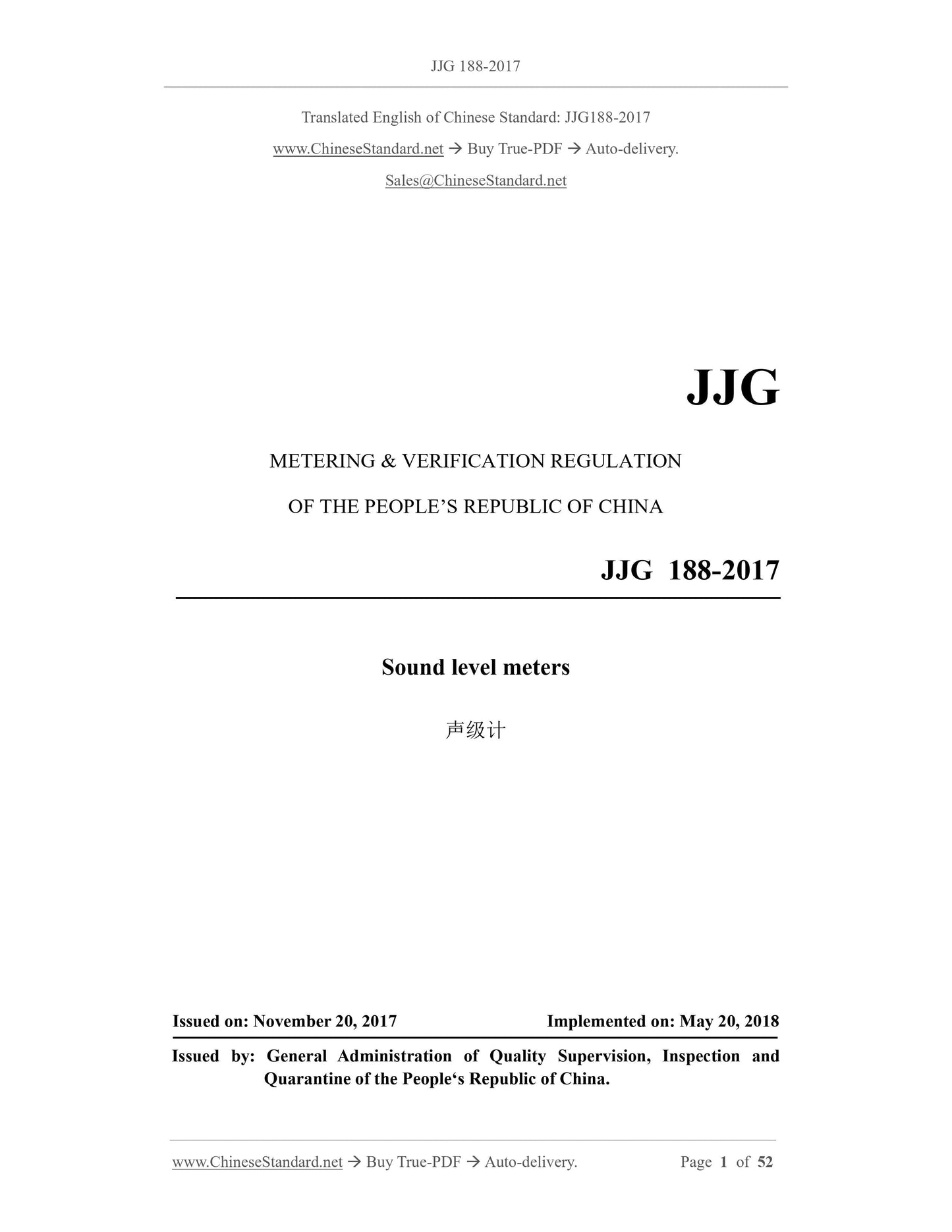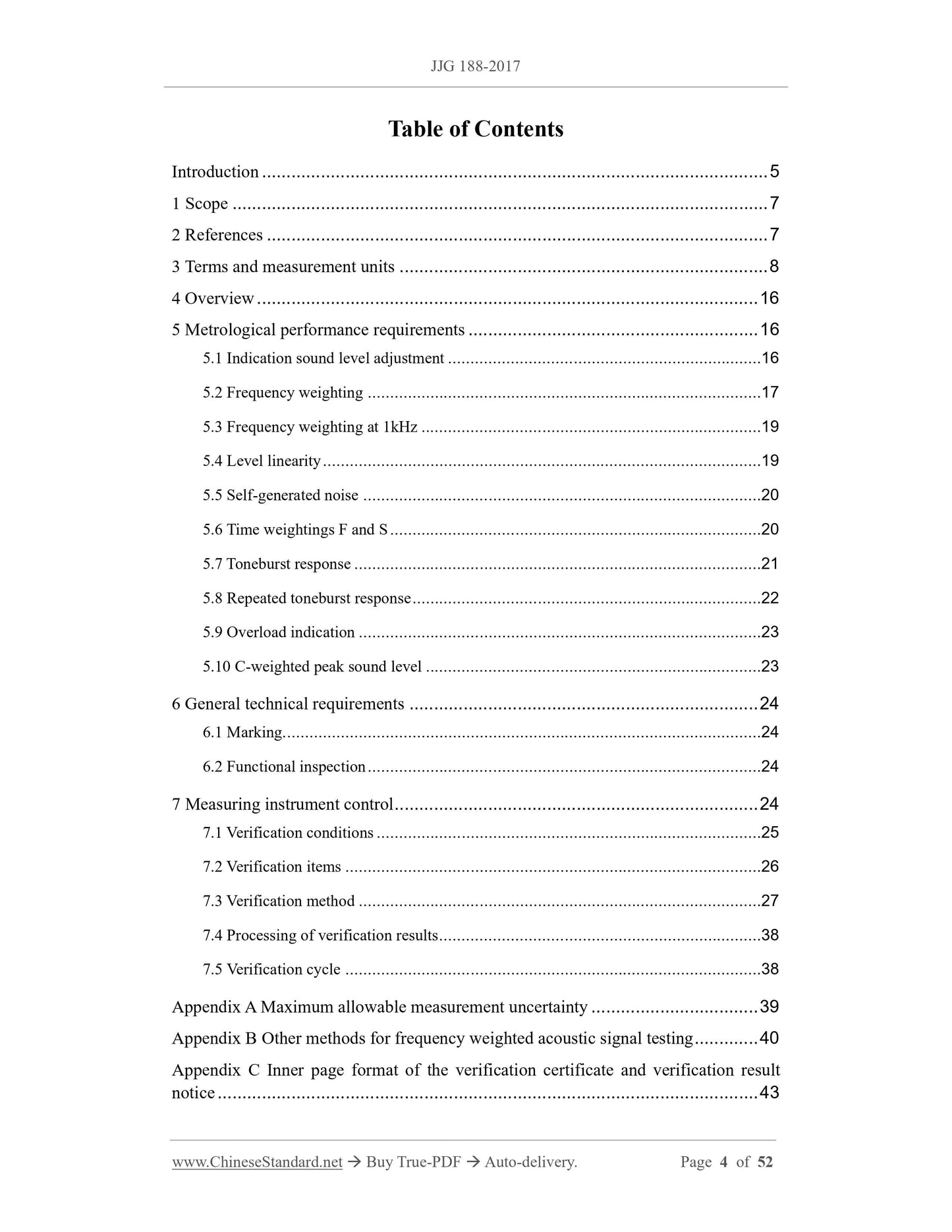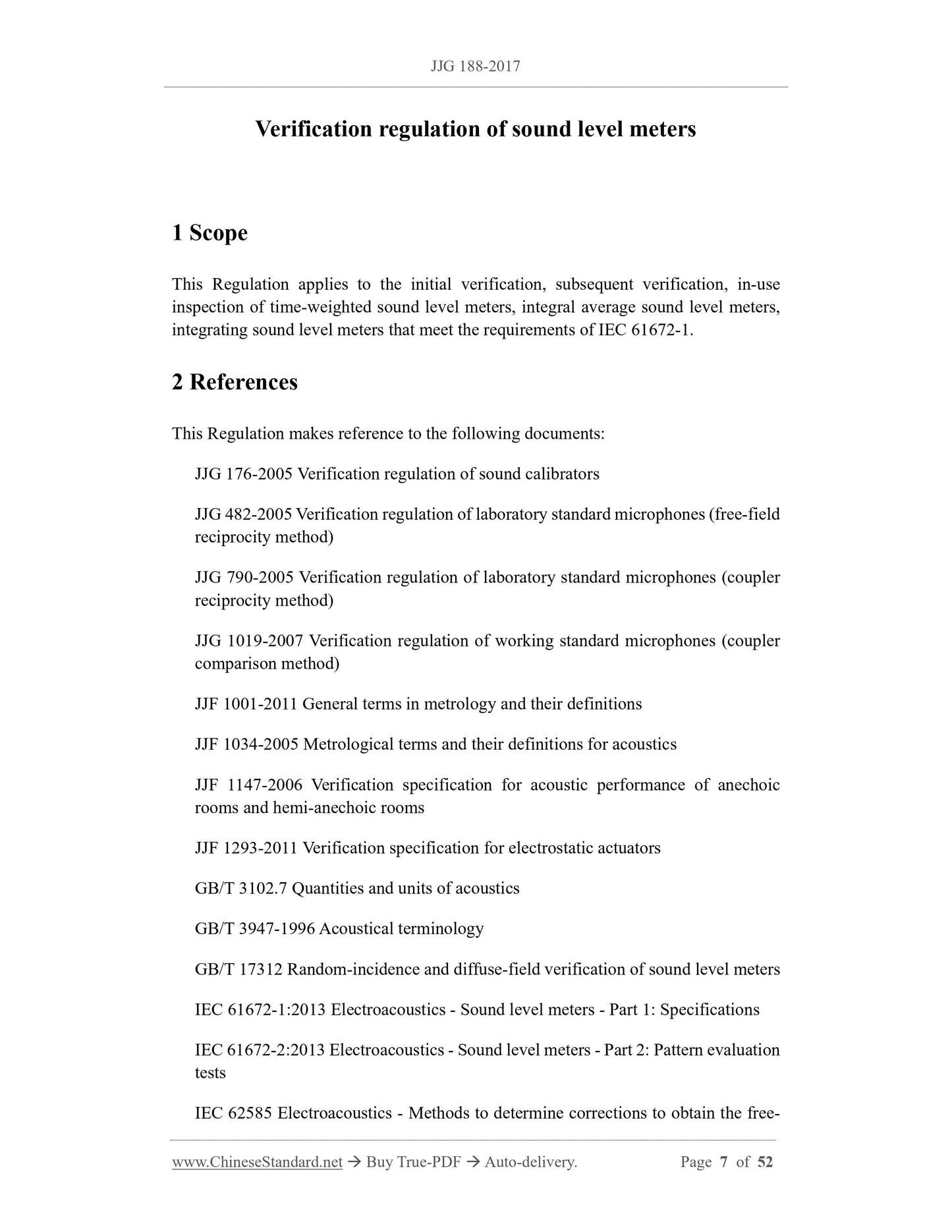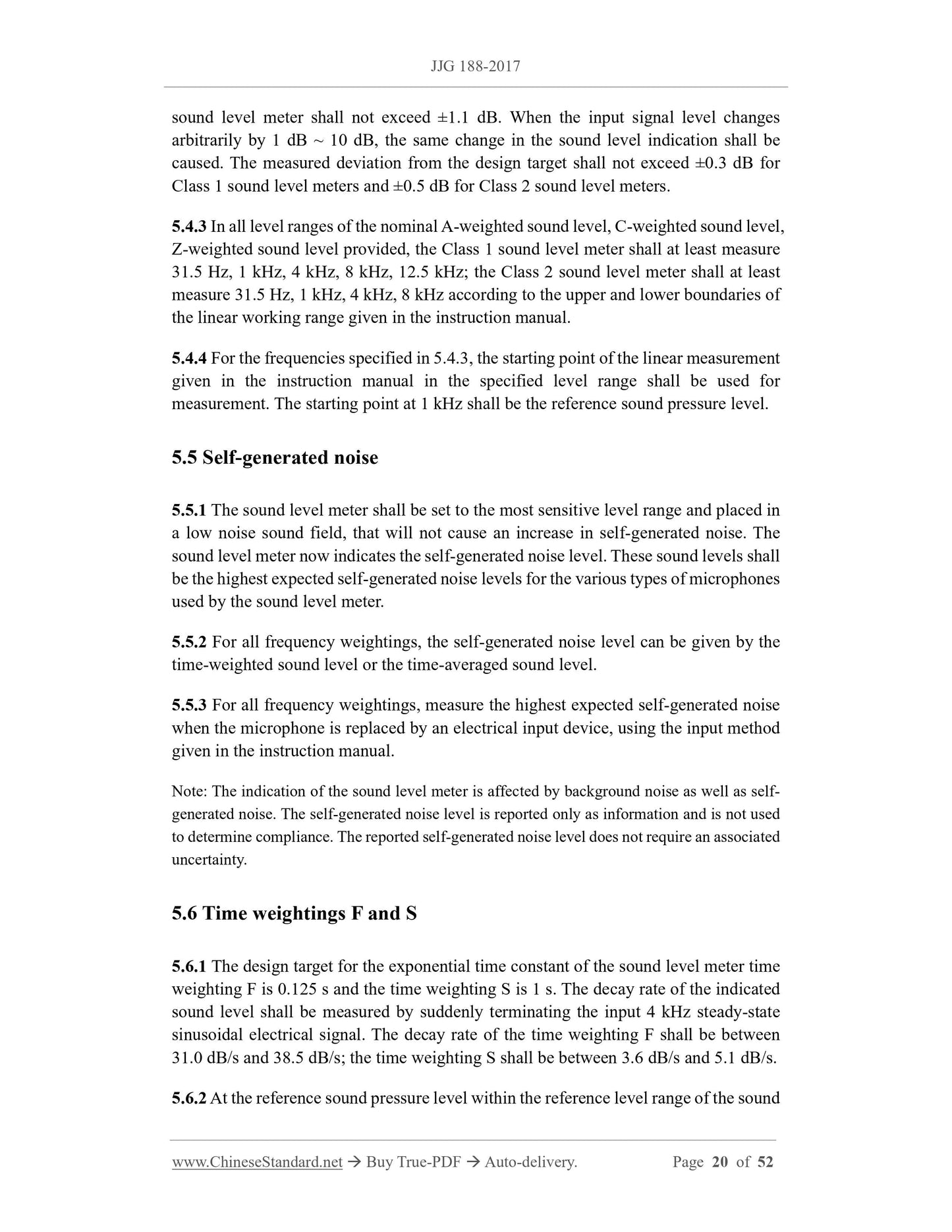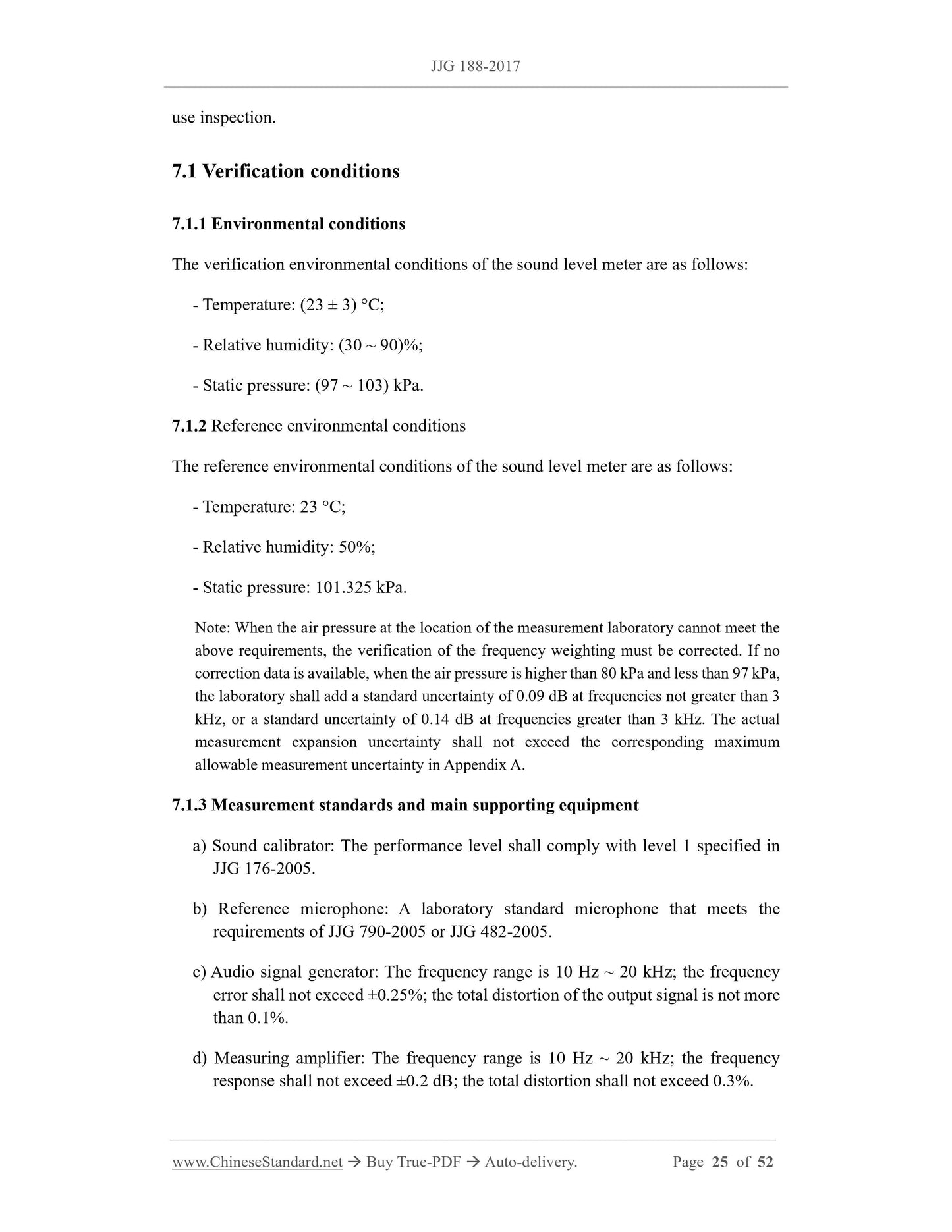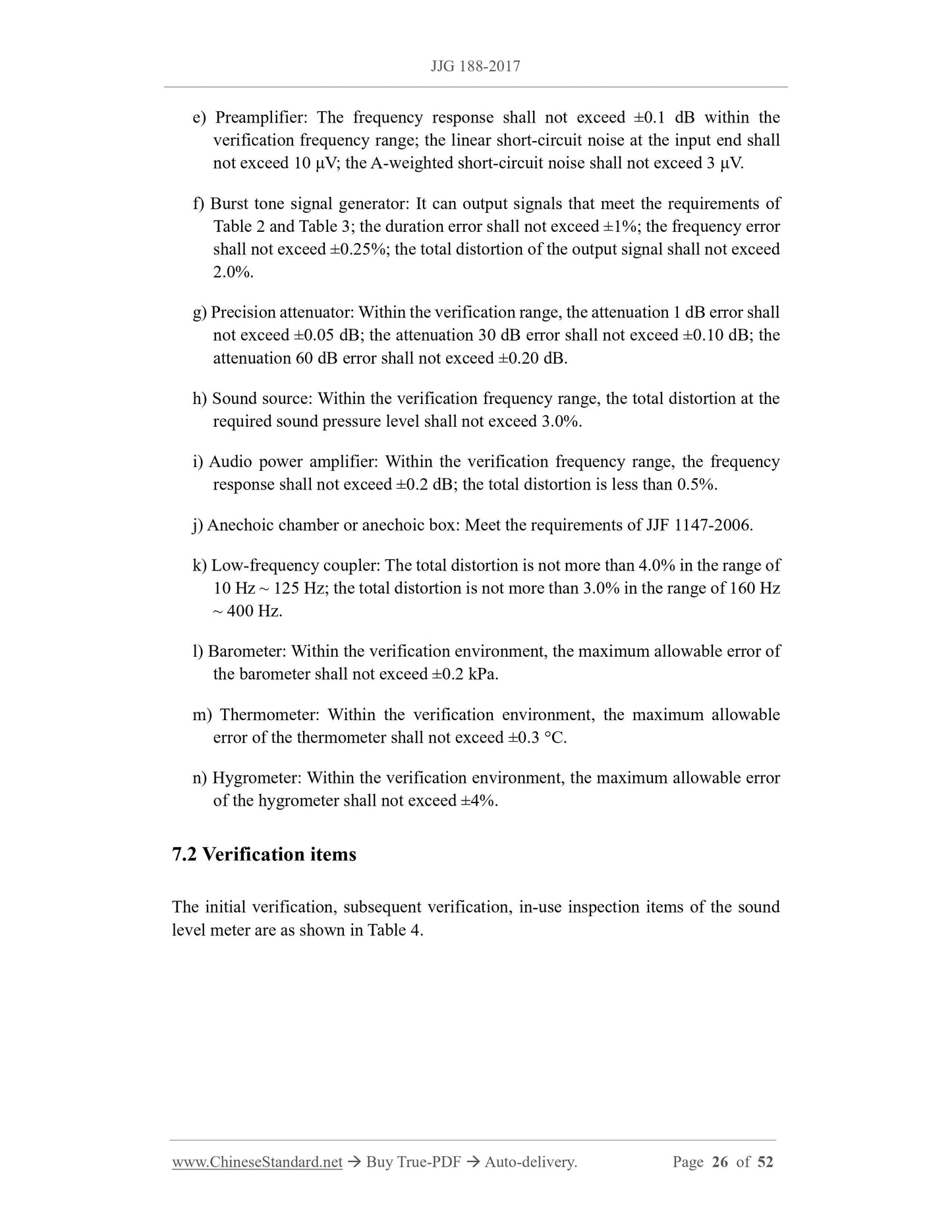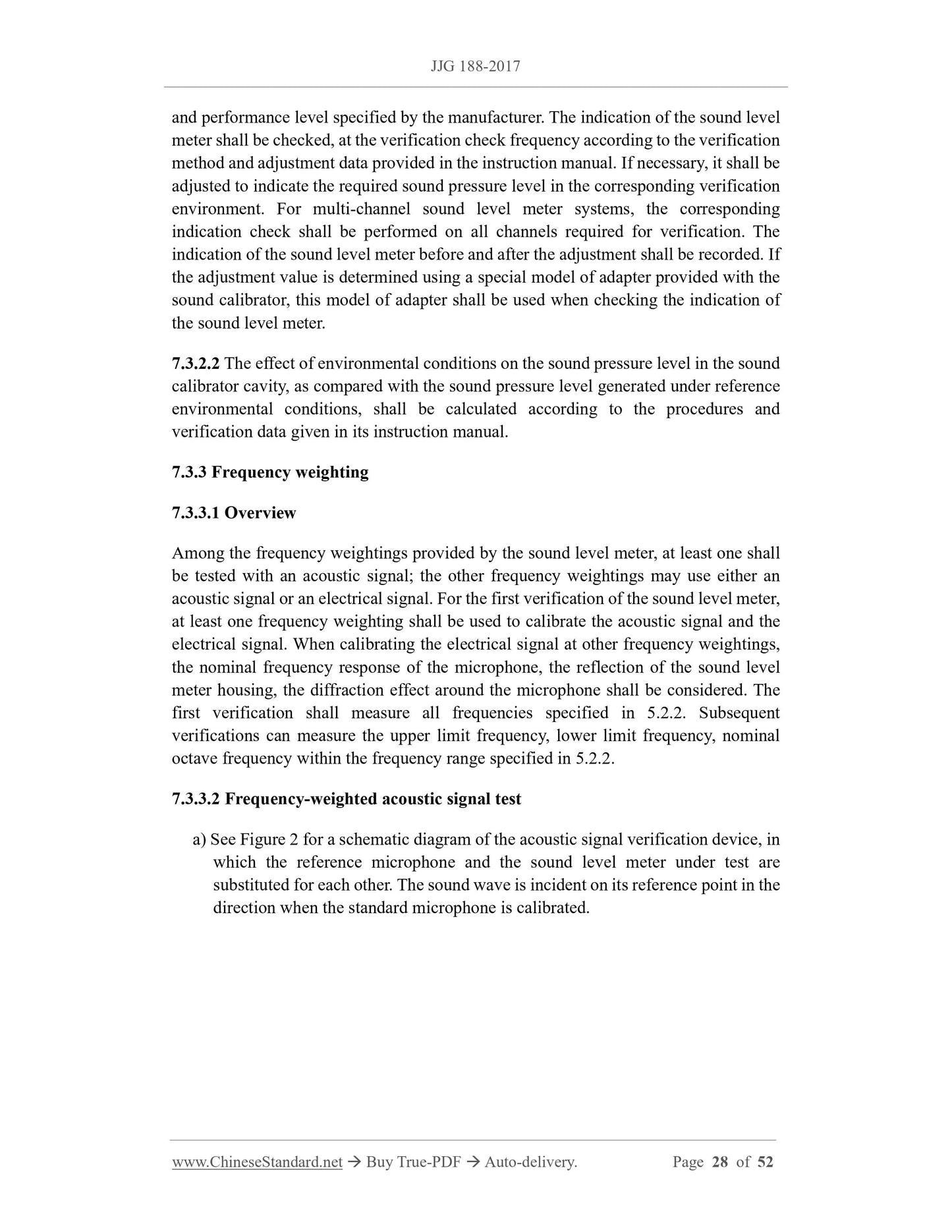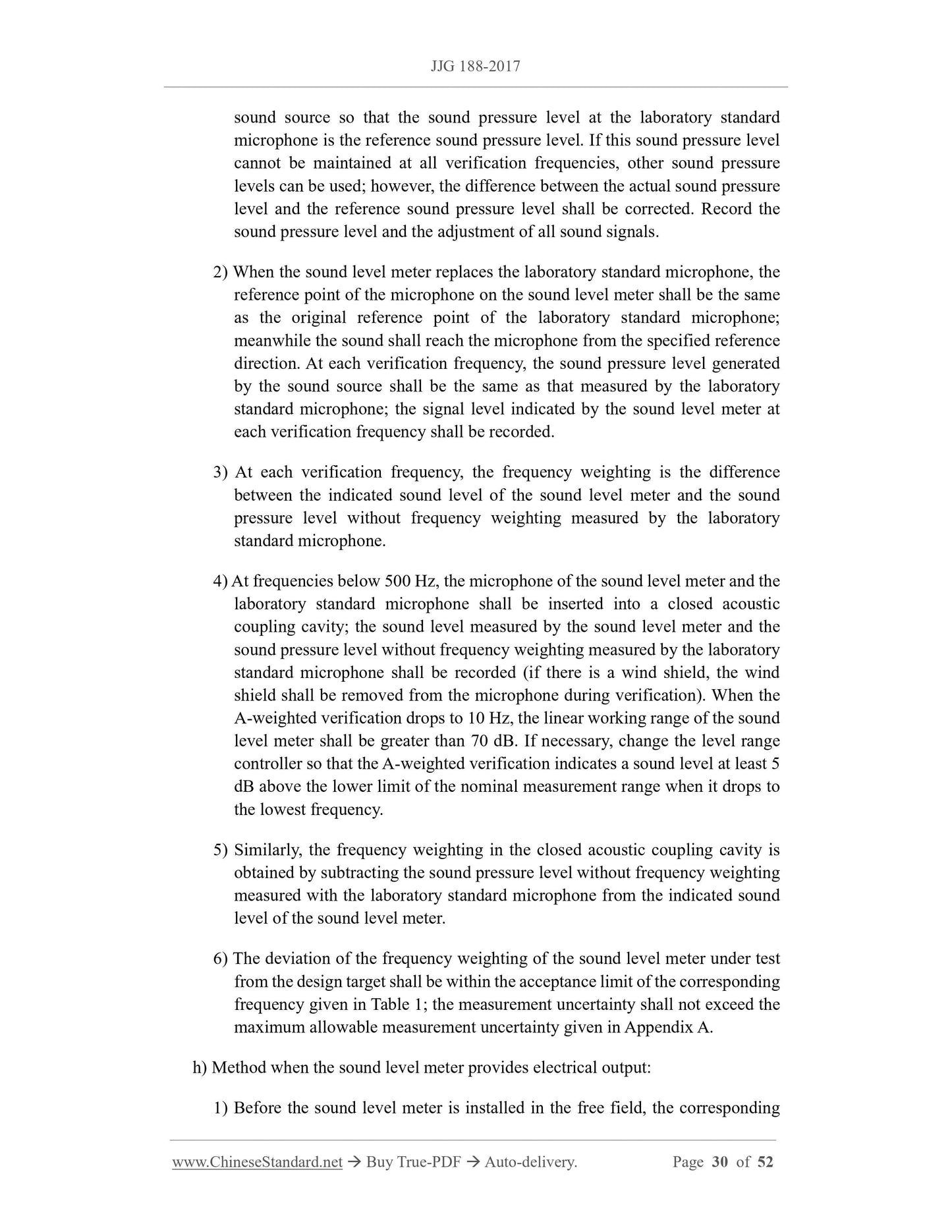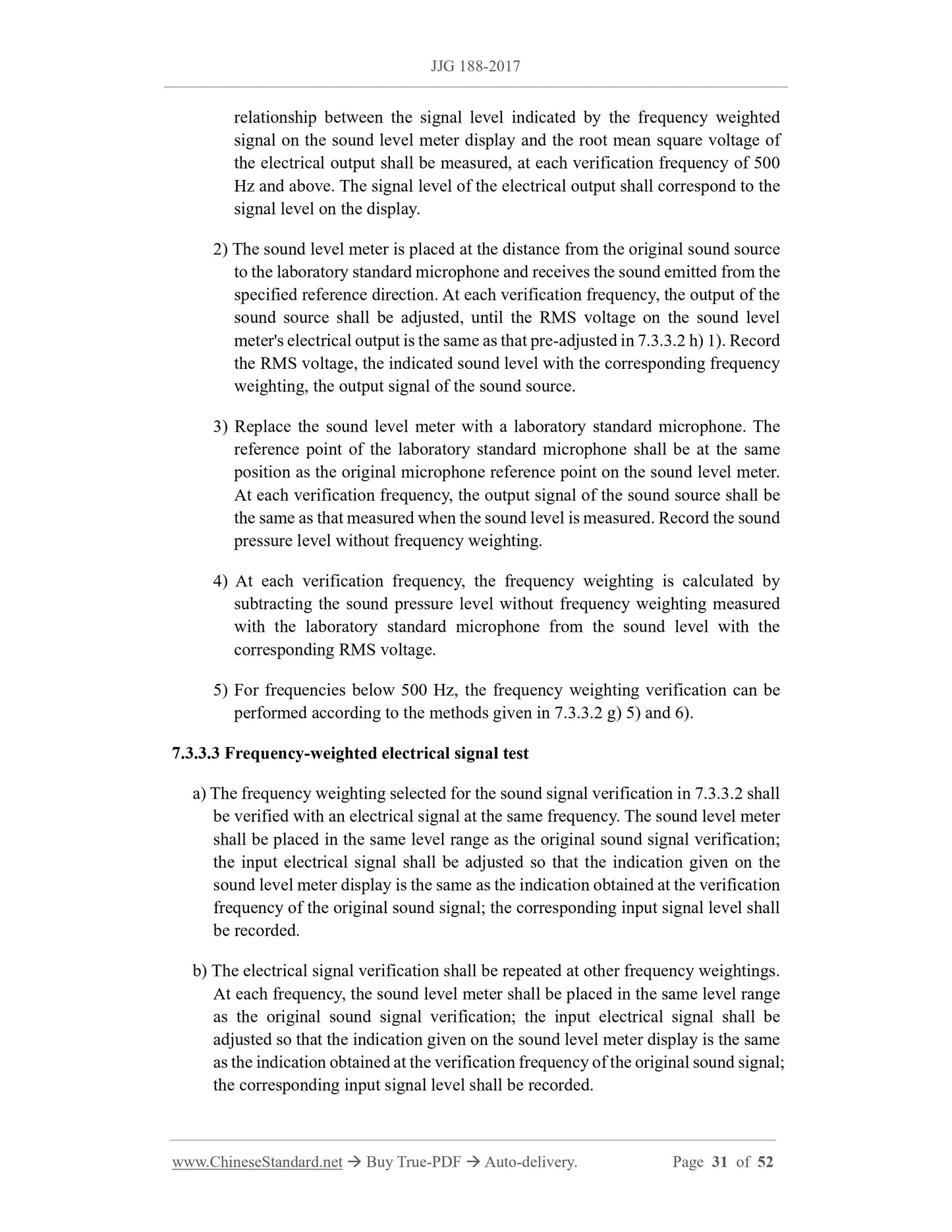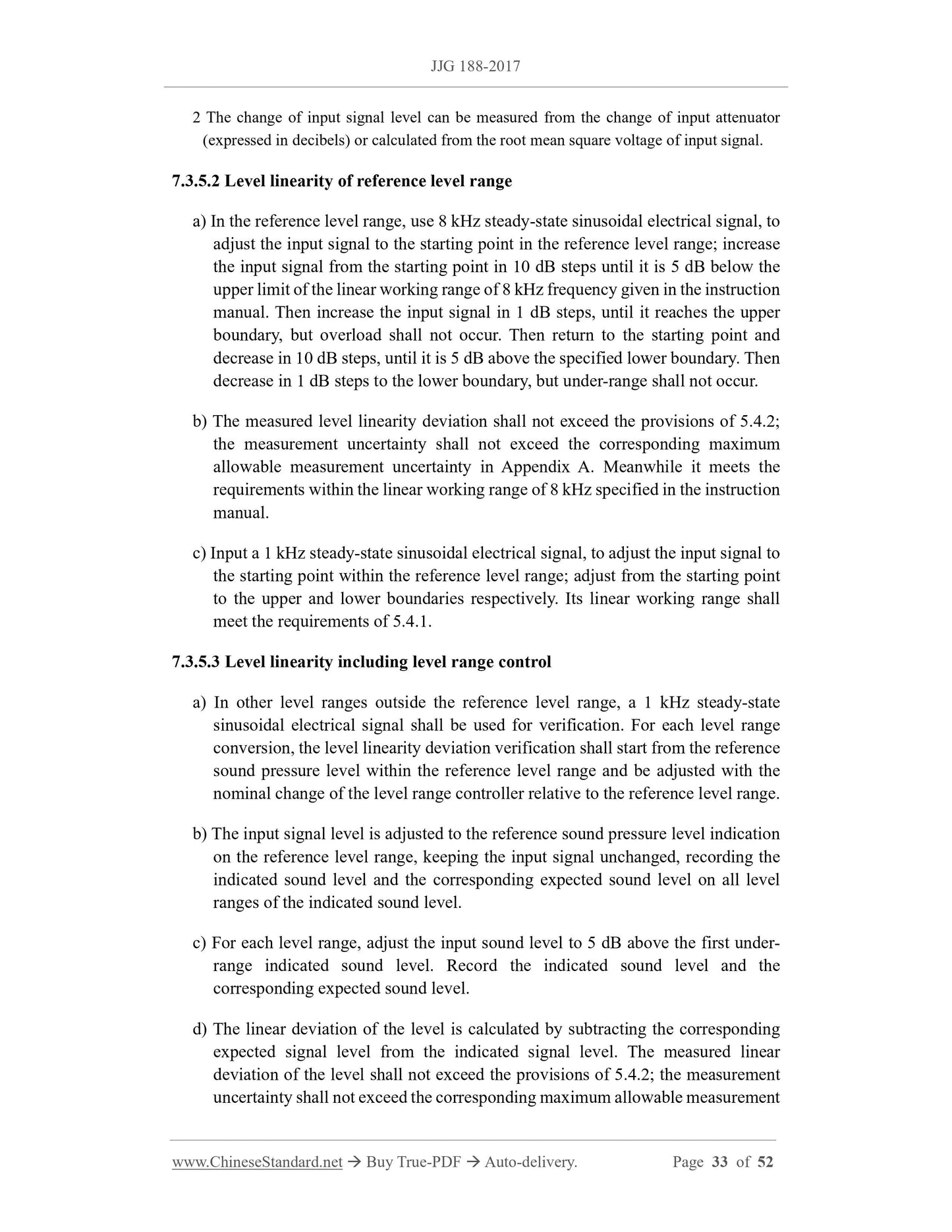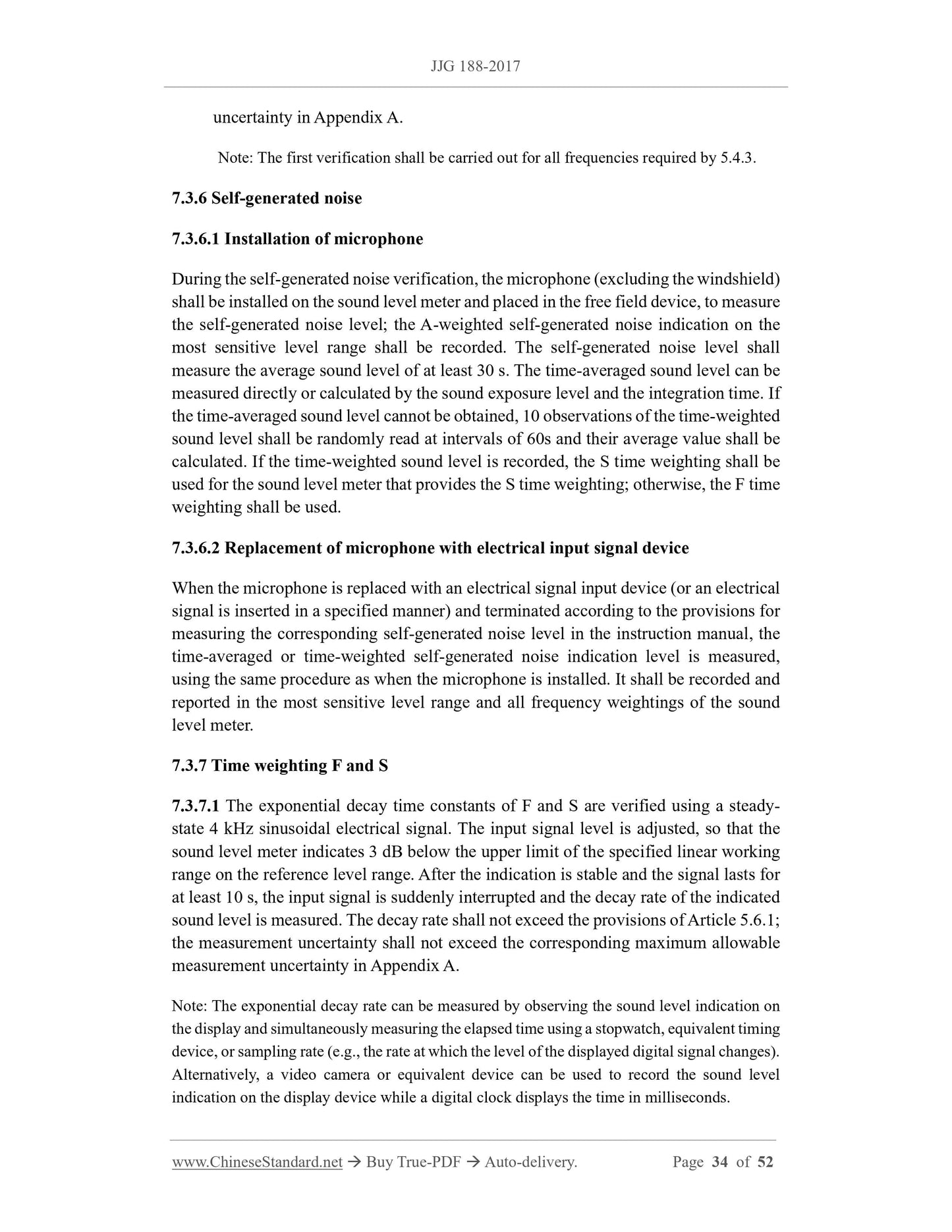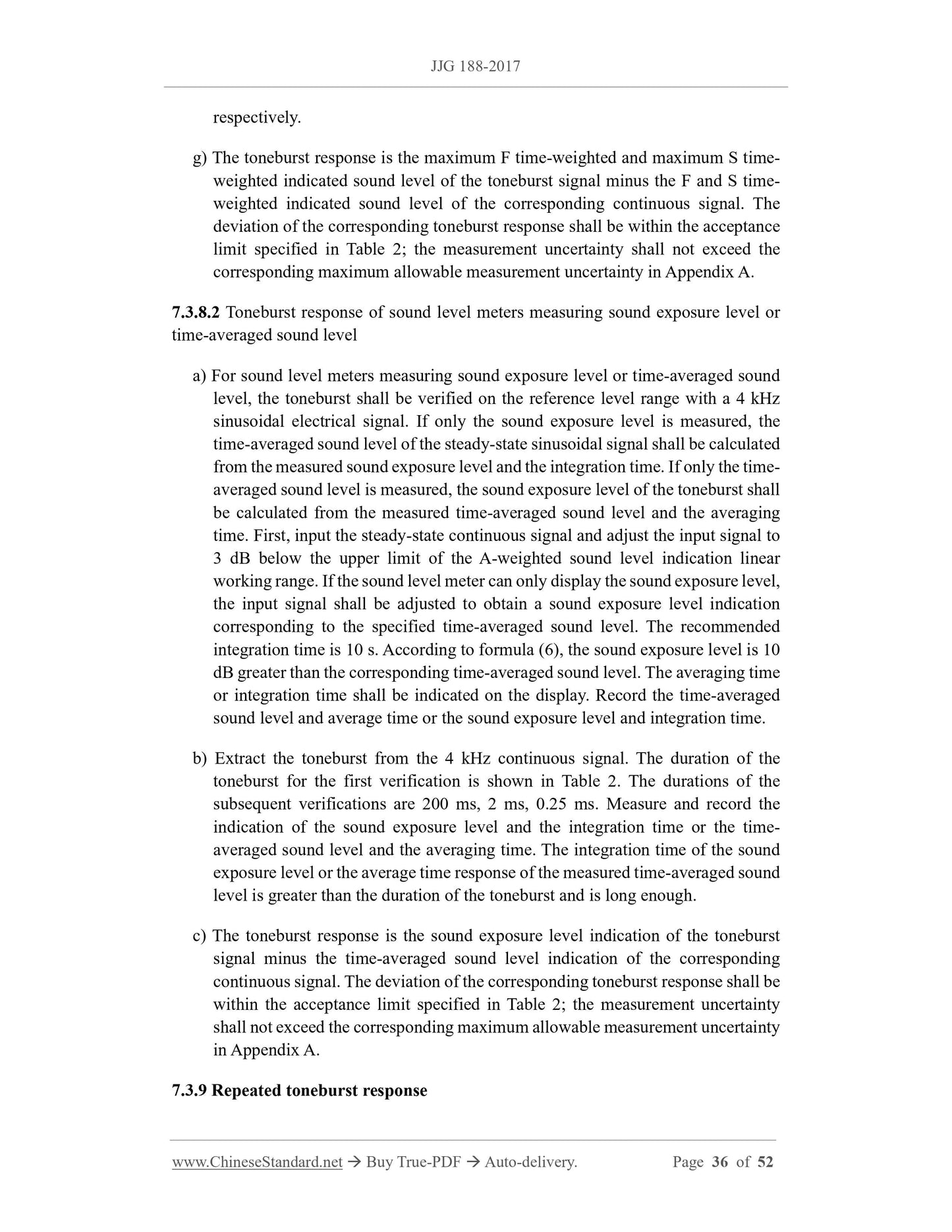1
/
of
12
www.ChineseStandard.us -- Field Test Asia Pte. Ltd.
JJG 188-2017 English PDF
JJG 188-2017 English PDF
Regular price
$615.00
Regular price
Sale price
$615.00
Unit price
/
per
Shipping calculated at checkout.
Couldn't load pickup availability
JJG 188-2017: Sound Level Meters
Delivery: 9 seconds. Download (and Email) true-PDF + Invoice.Get Quotation: Click JJG 188-2017 (Self-service in 1-minute)
Newer / historical versions: JJG 188-2017
Preview True-PDF
Scope
This Regulation applies to the initial verification, subsequent verification, in-useinspection of time-weighted sound level meters, integral average sound level meters,
integrating sound level meters that meet the requirements of IEC 61672-1.
Basic Data
| Standard ID | JJG 188-2017 (JJG188-2017) |
| Description (Translated English) | Sound Level Meters |
| Sector / Industry | Metrology and Measurement Industry Standard |
| Classification of Chinese Standard | A59 |
| Word Count Estimation | 40,499 |
| Date of Issue | 2017-11-20 |
| Date of Implementation | 2018-05-20 |
| Older Standard (superseded by this standard) | JJG 188-2002 |
| Regulation (derived from) | AQSIQ Notice 2017 No. 103 |
| Issuing agency(ies) | General Administration of Quality Supervision, Inspection and Quarantine |
Share
